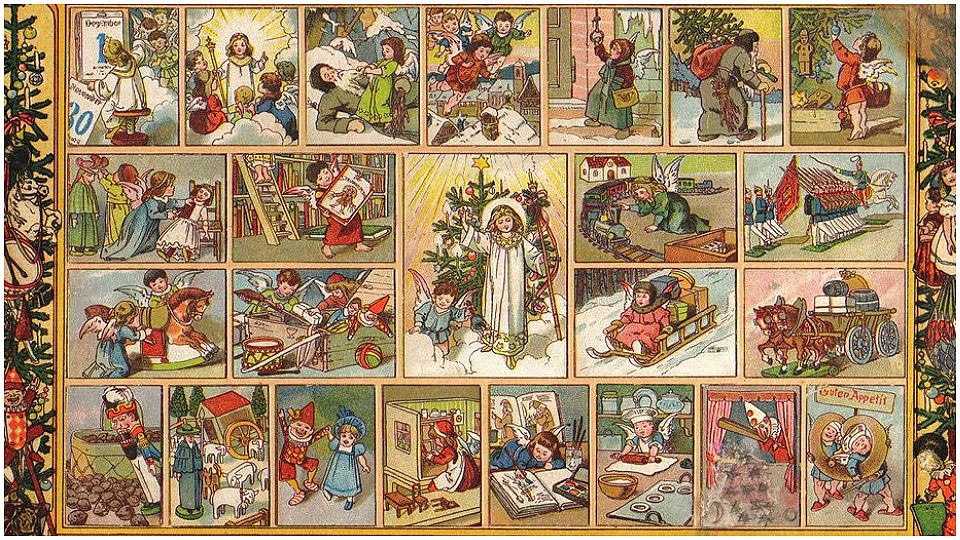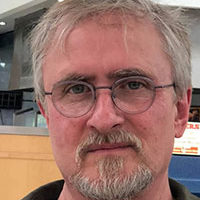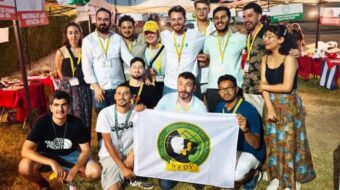
People’s World frequently publishes timely interpretations of some of the major religious holidays that our readers may observe. These thoughts usually turn out to possess much wider meaning than their original sectarian intentions and show the progressive tendencies inherent in just about all faith traditions. We invite our readers to reflect on this poetic and evocative welcome to the Advent season—anticipating the birth of Jesus at Christmas—that came our way via Deacon Dan Wright.
We begin Advent this year with a call to be a people of vision. We are to lay sight on the coming of the rule of peace and righteousness, and we are to carry it forth into the days and events that lie ahead of us. The message is one that gives us hope that something better lies along the way: “They will beat their swords into plowshares and their spears into pruning hooks.”
In our times, the reality of a world in which there is peace and unity of purpose seems far off. We know well that we live in a divided society where people have taken their positions along certain issues and lines, and rarely feel move toward restoring unity. Yet our preparation that occurs in Advent urges us to set our sights on that which is to enter our world and make us one.
Too often we have taken the vision of peace expressed in Isaiah as having to do with heaven and what lies beyond. If we are to focus on what lies beyond the time and confines of our individual and personal sojourn here on Earth, I’m of the mind that the most important things that we might focus on are those that will affect the lives of future generations—the lives of those children we bring into the world and the lives of their children and children’s children. This is what having vision is most about.
To set our sights on the world to come means in many ways that we are to set our sights on this world and how we can make it be a different and better place, and this—at least partly—is the source of much of our disagreement. Each believes their way is the better way, the way of righteousness even.
Too infrequently do we stop to consider where the ideas that enter our minds and lives come from. We are bombarded, especially this time of year, with advertisements and messages of all sorts that tell us the path to happiness follows the way of the marketplace. Even as I prepared this homily, with the United States Conference of Catholic Bishops (USCCB) website set to one side of the screen with the readings, I was distracted by advertisements for titles aimed directly at me: Rebuking the Devil, Creating a Culture of Encounter, the new Order for Baptisms for Children. I had to pause and wonder how much of that would enter this homily.
Part of the vision for peace that we must have involves separating ourselves, inasmuch as we possibly can, from the power that is the enemy of unity, whatever name we give it; however, naming it is important. In our culture, we are driven by forces that claim our lives part and parcel. I recently pointed out to a friend that there are things that have become for us our economic subconscious. The realities we live by are programmed into us daily. Where do we turn?
Serious questions lie before us in our times. Should we reconcile with everyone, even those with whom we most strongly disagree, or is our task more to rightly delineate between good and evil? Perhaps we should consider the option that it is neither. Perhaps we are merely to live our lives according to the vision that is encapsulated in the spirit of Advent, and that is the vision of the coming of peace into the world. Peace is open-ended. We go out and discover it, meet it on the street, make it, build it daily. We have the materials to create peace.
With all the voices in our world, the voices of politics and the voices of the market, we seldom find clarity in knowing where to turn. Yet our hope must also lie in the vision of the Gospel, which in Matthew promises that evil will be swept away “as it was in the days of Noah.” The Gospel offers hope for a world to come, one in which evil will not be.
Each year, Advent prepares us for Christmas, and each year it speaks to us in a different way. We know the themes: slow down, de-clutter, focus. Advent points us in a direction that speaks in the here and now. Have vision, work for peace, build a world where justice prevails, where the structures of health and happiness do not depend on what you are able to purchase but on what you are able to give of yourself, to take up the hammer and beat the sword into an instrument of harvest.
Reprinted from Dan Wright’s blog “My Life as a Roman Catholic Permanent Deacon: A Weblog of Reflections, Homilies, and Various Other Musings & Rants.” The original posting can be found here.










